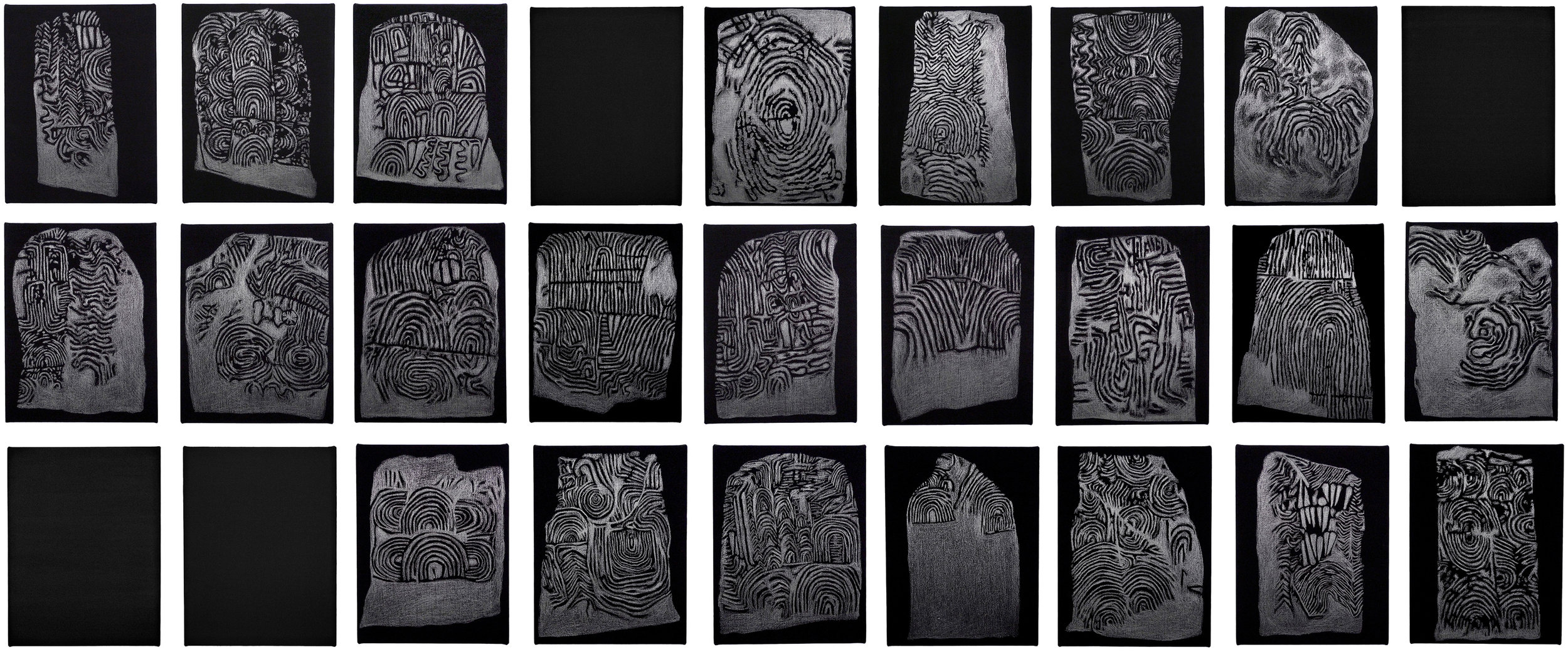
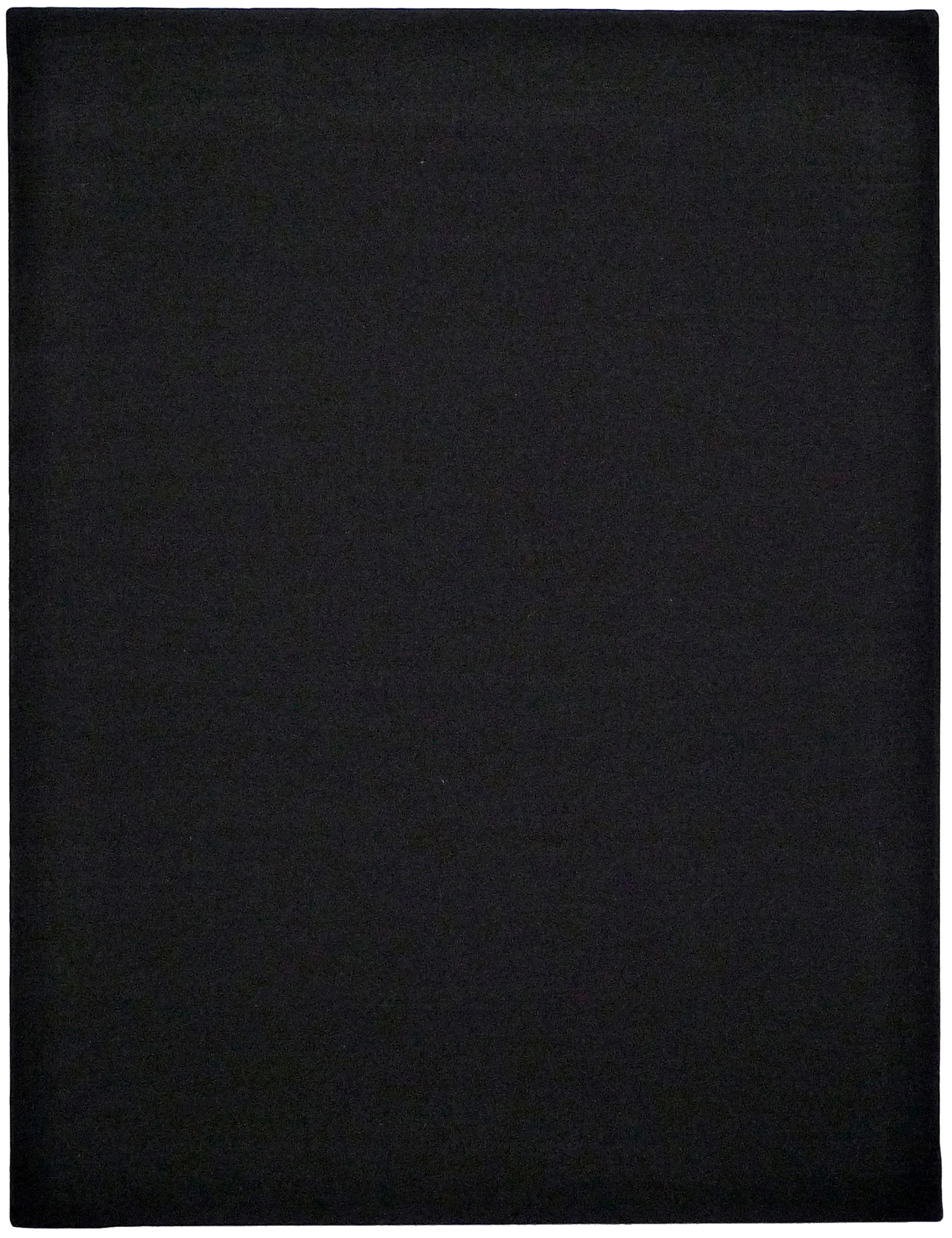
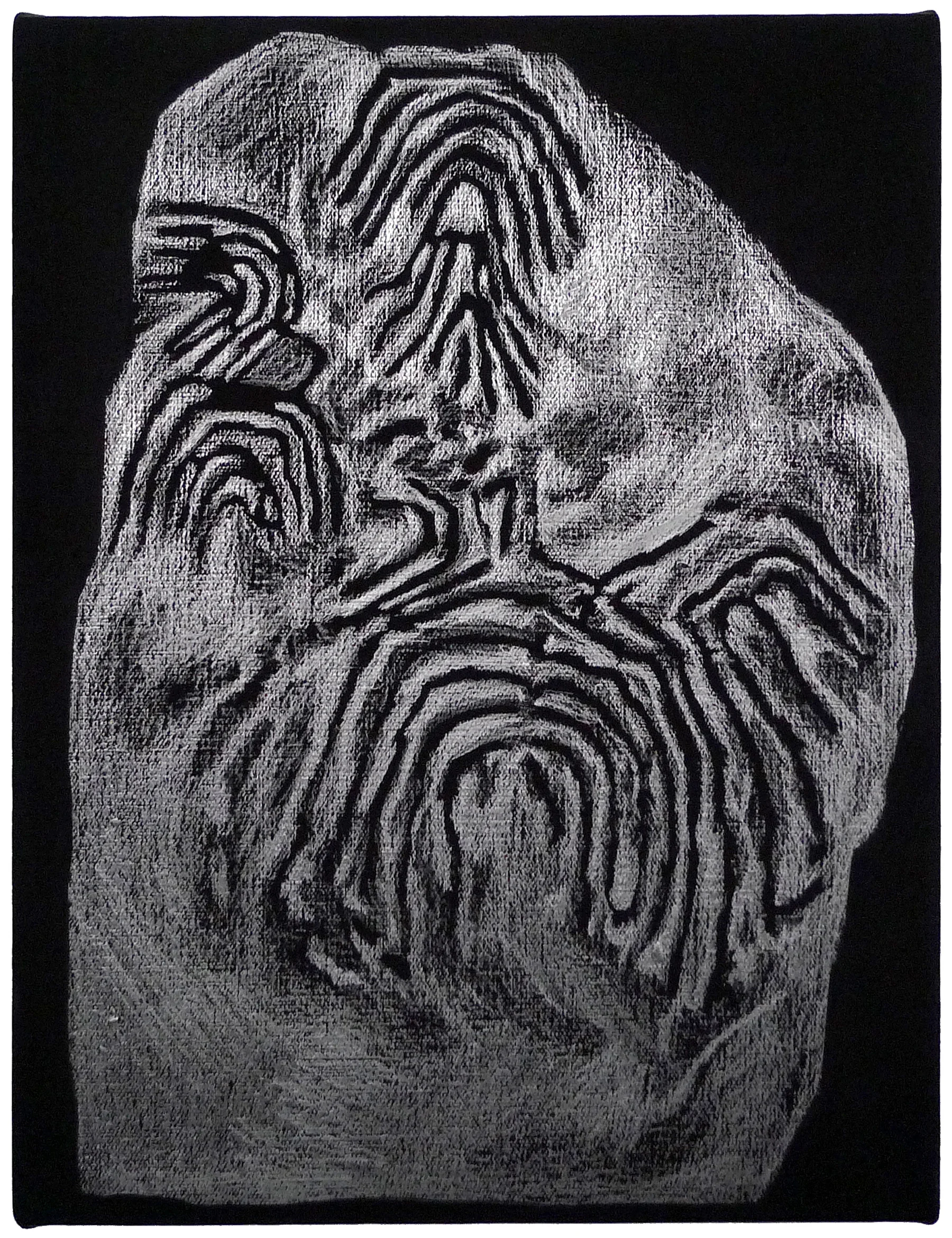
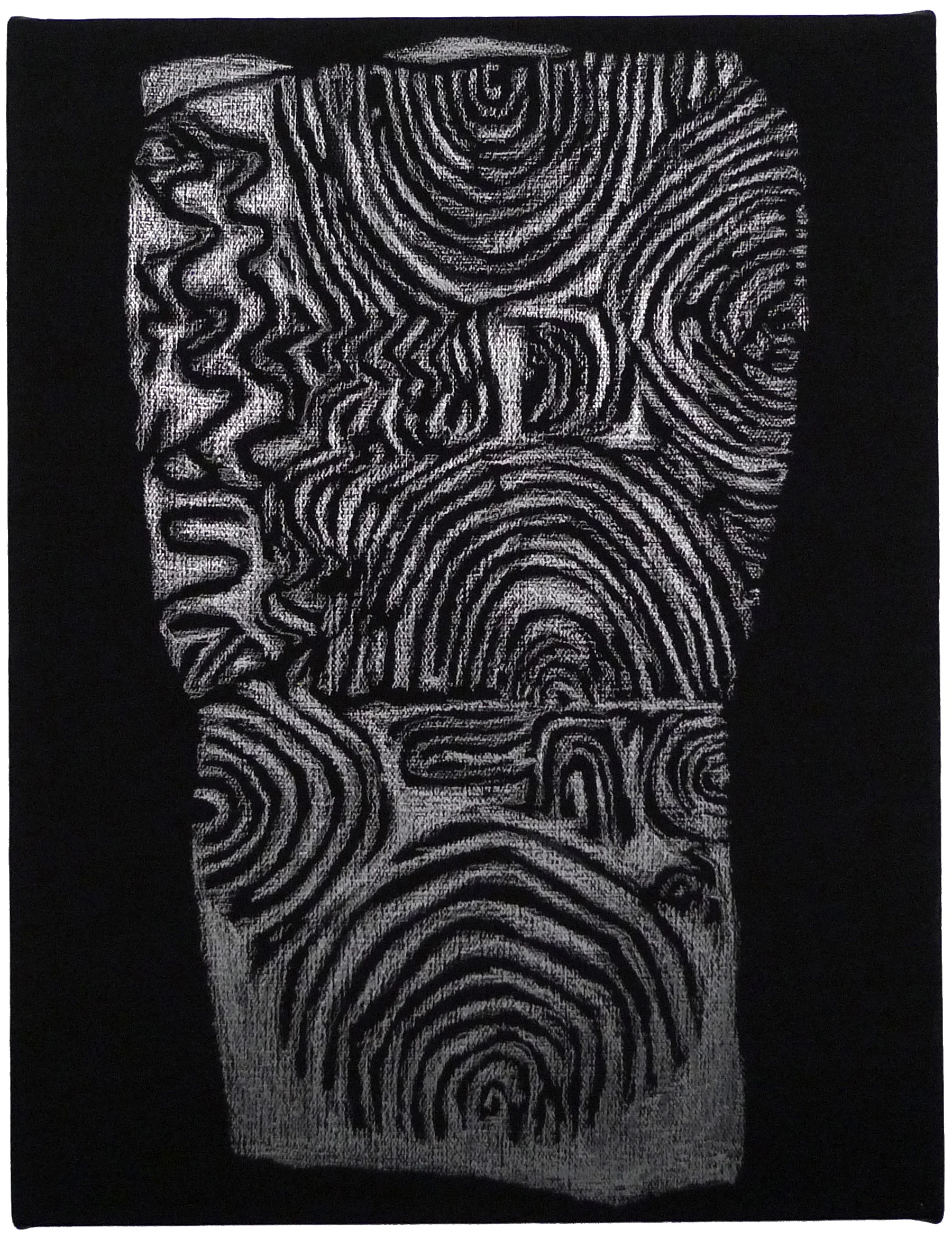

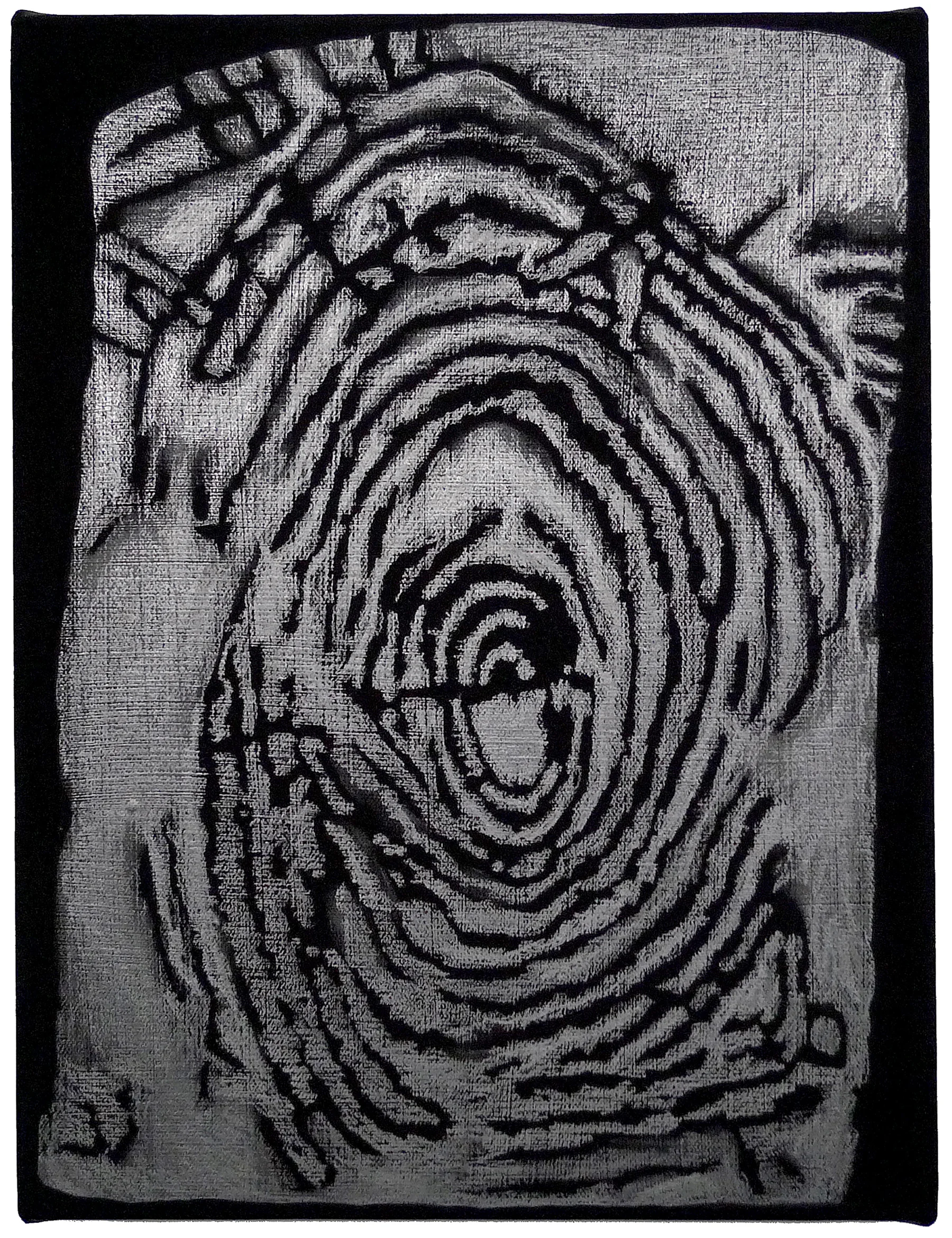

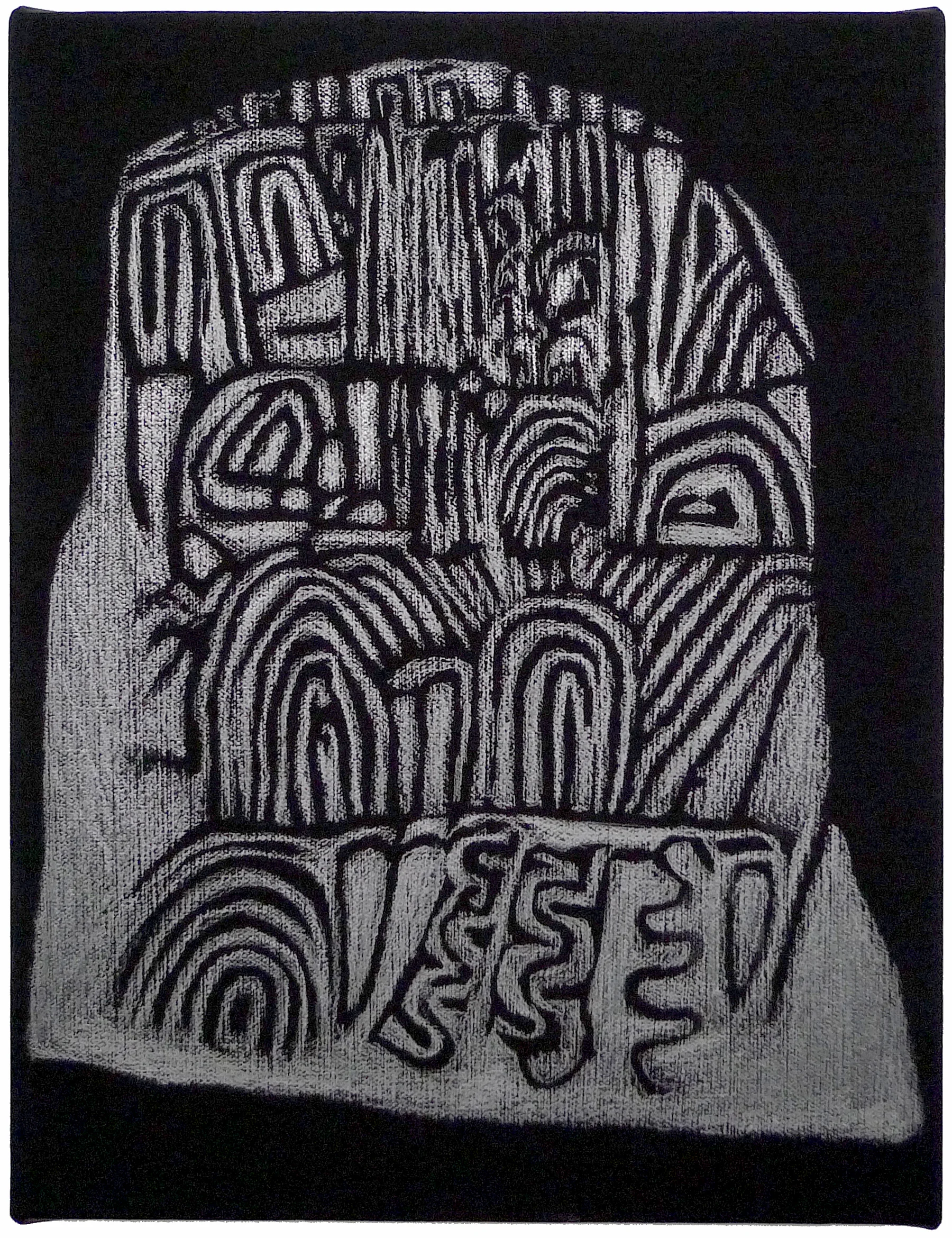
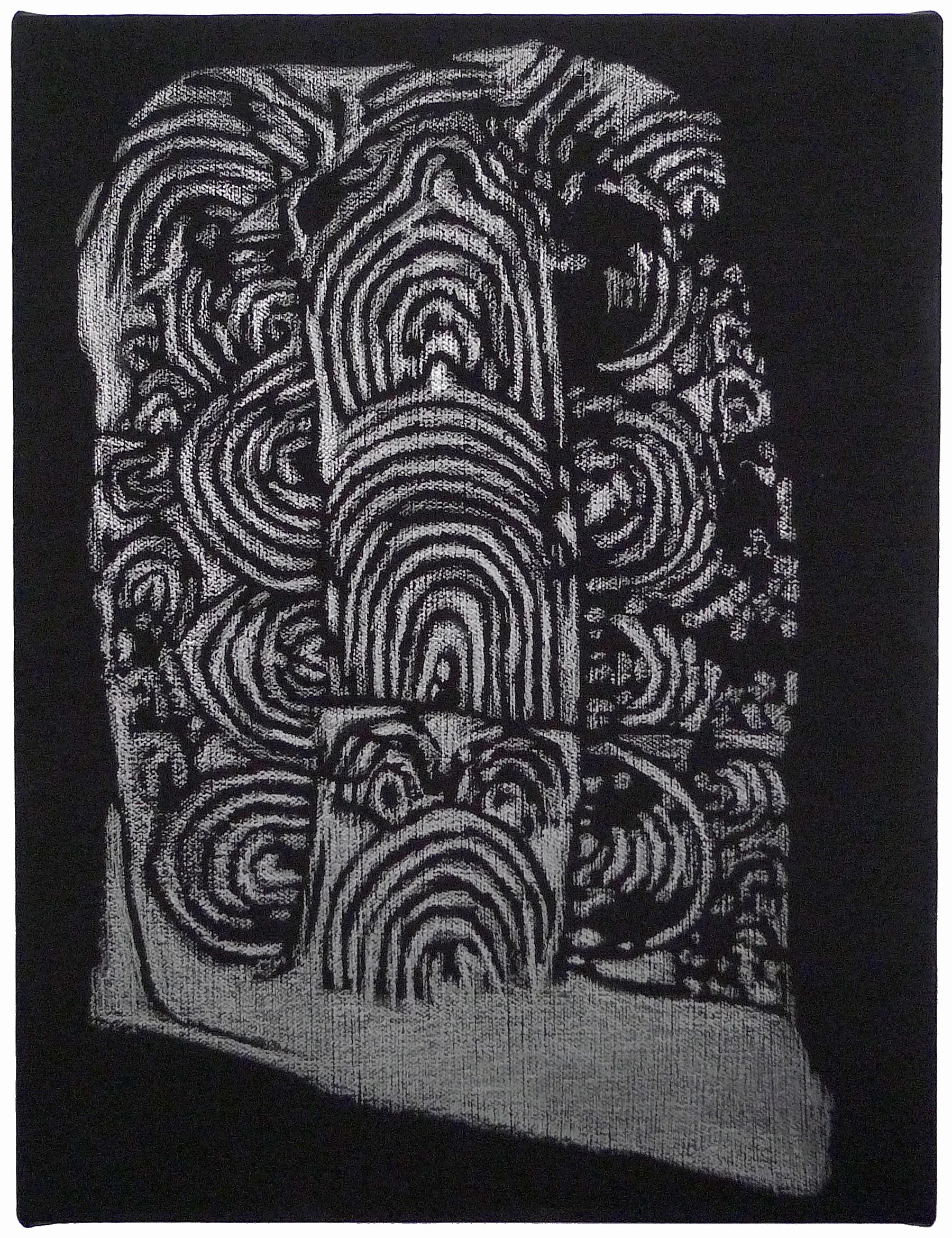
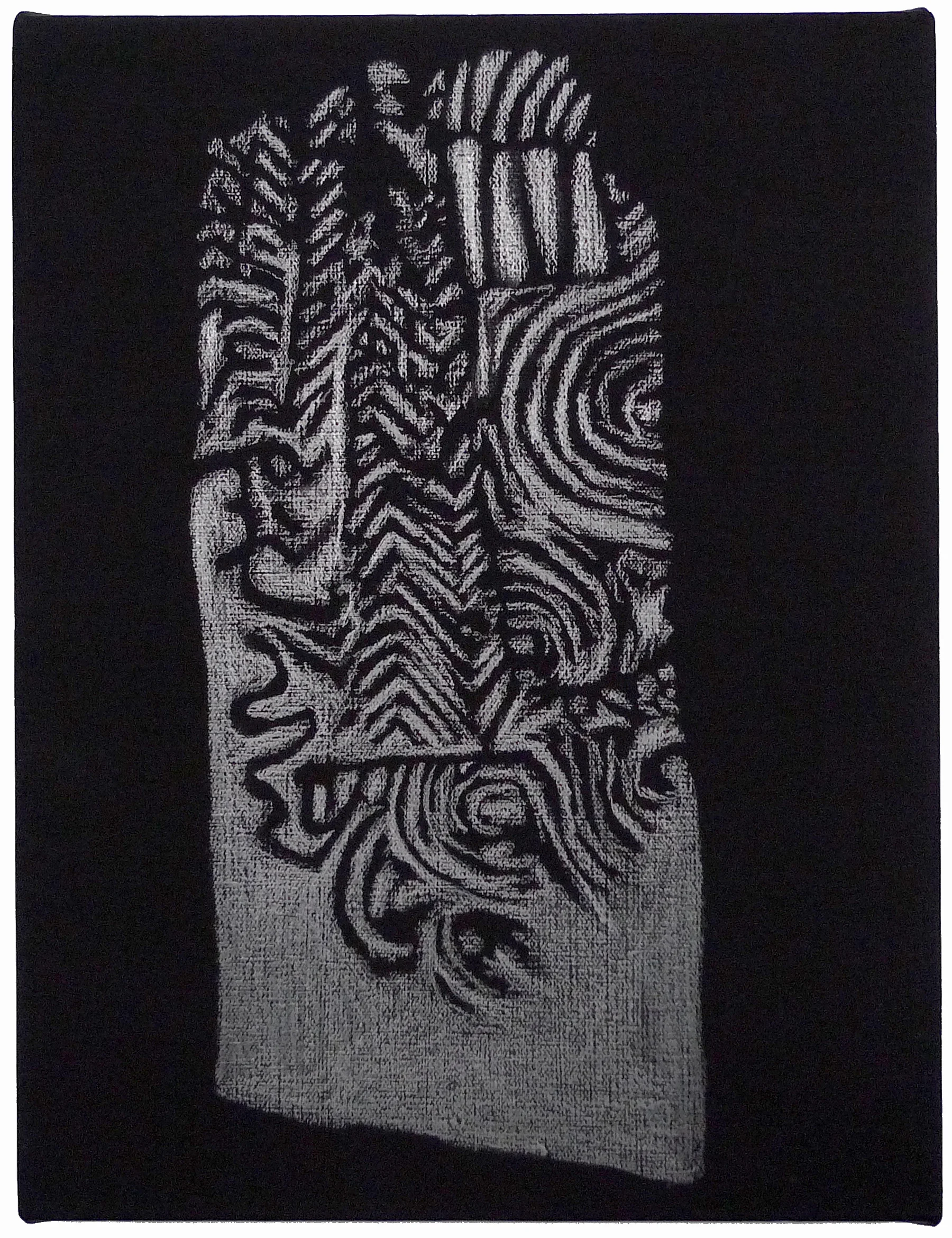

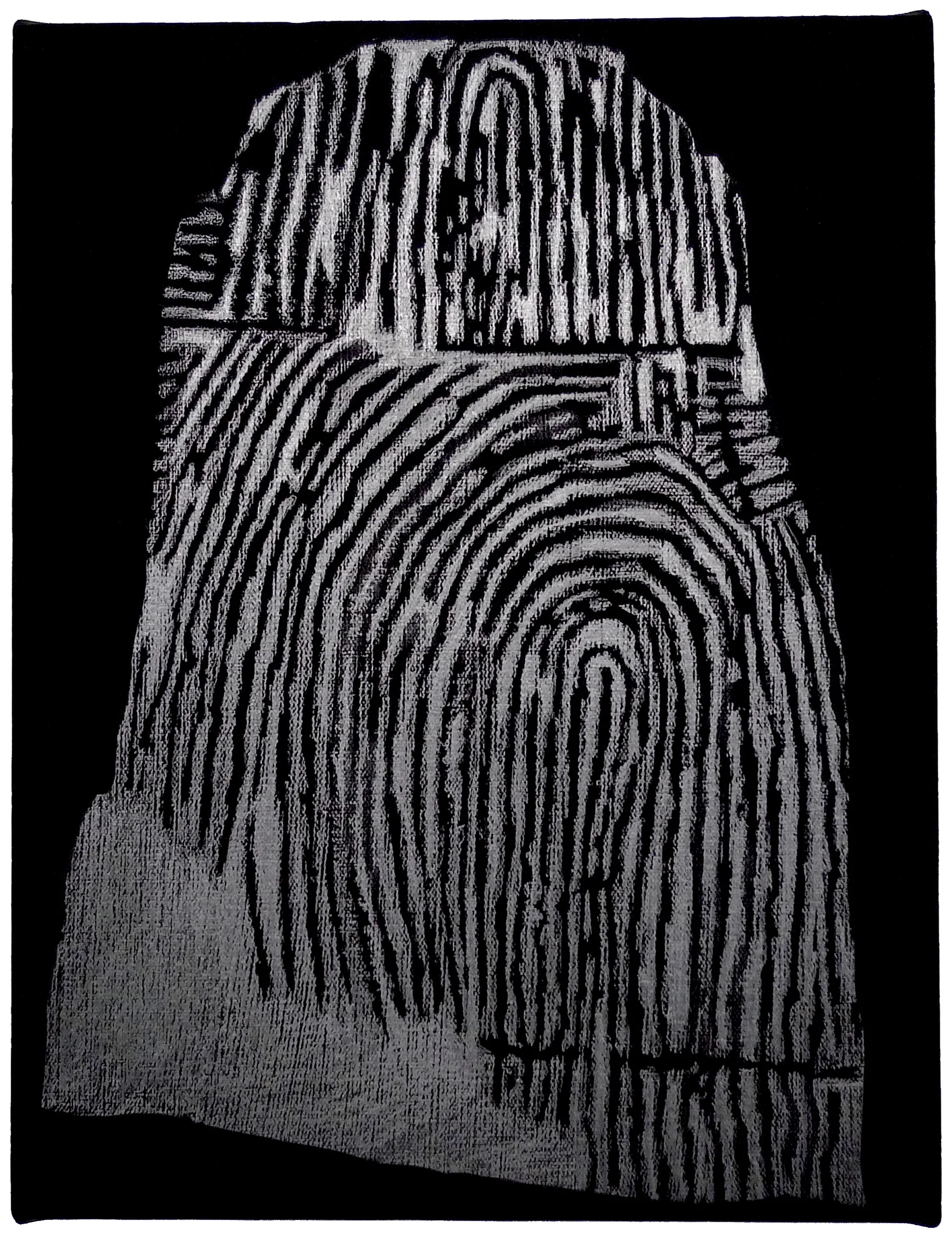
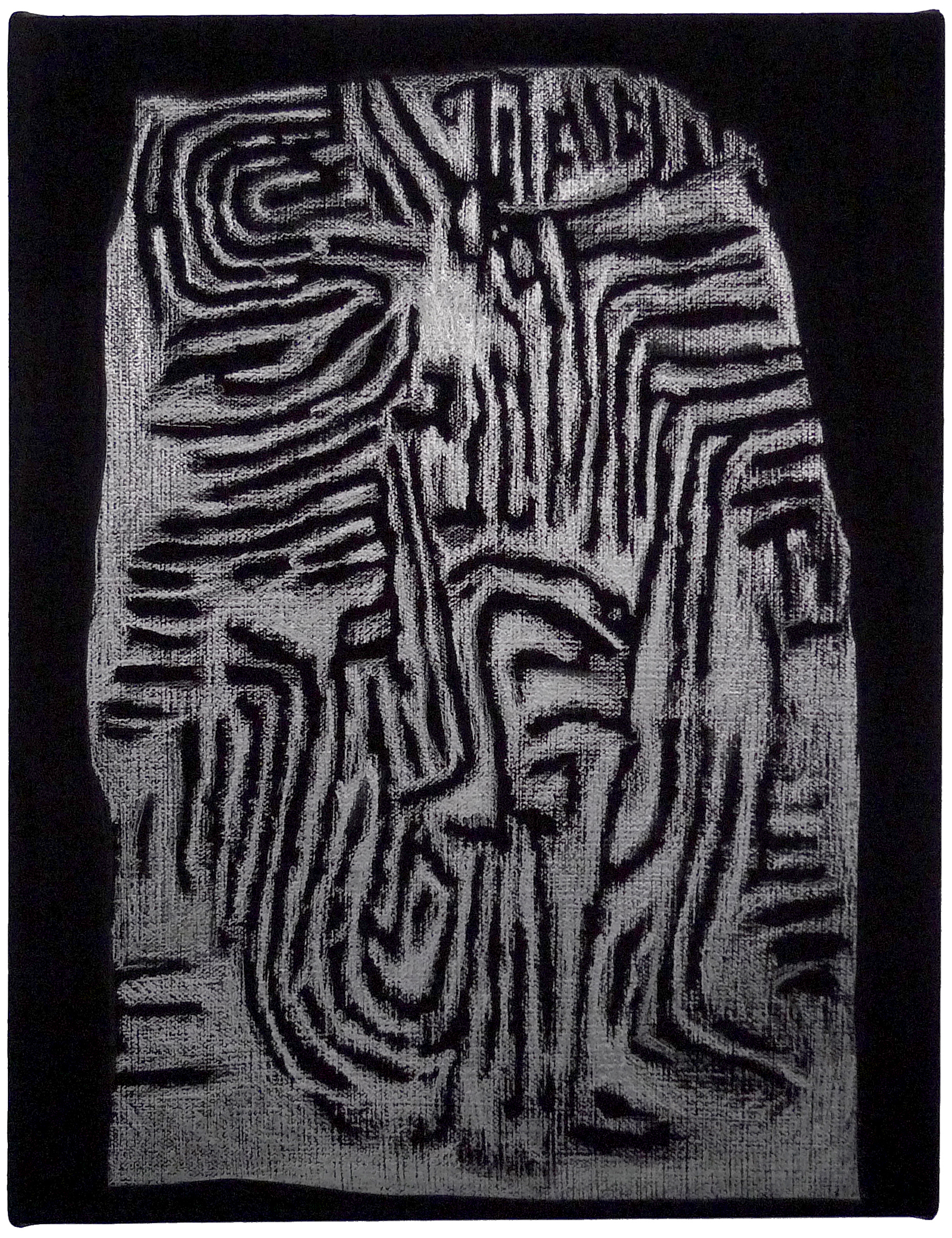

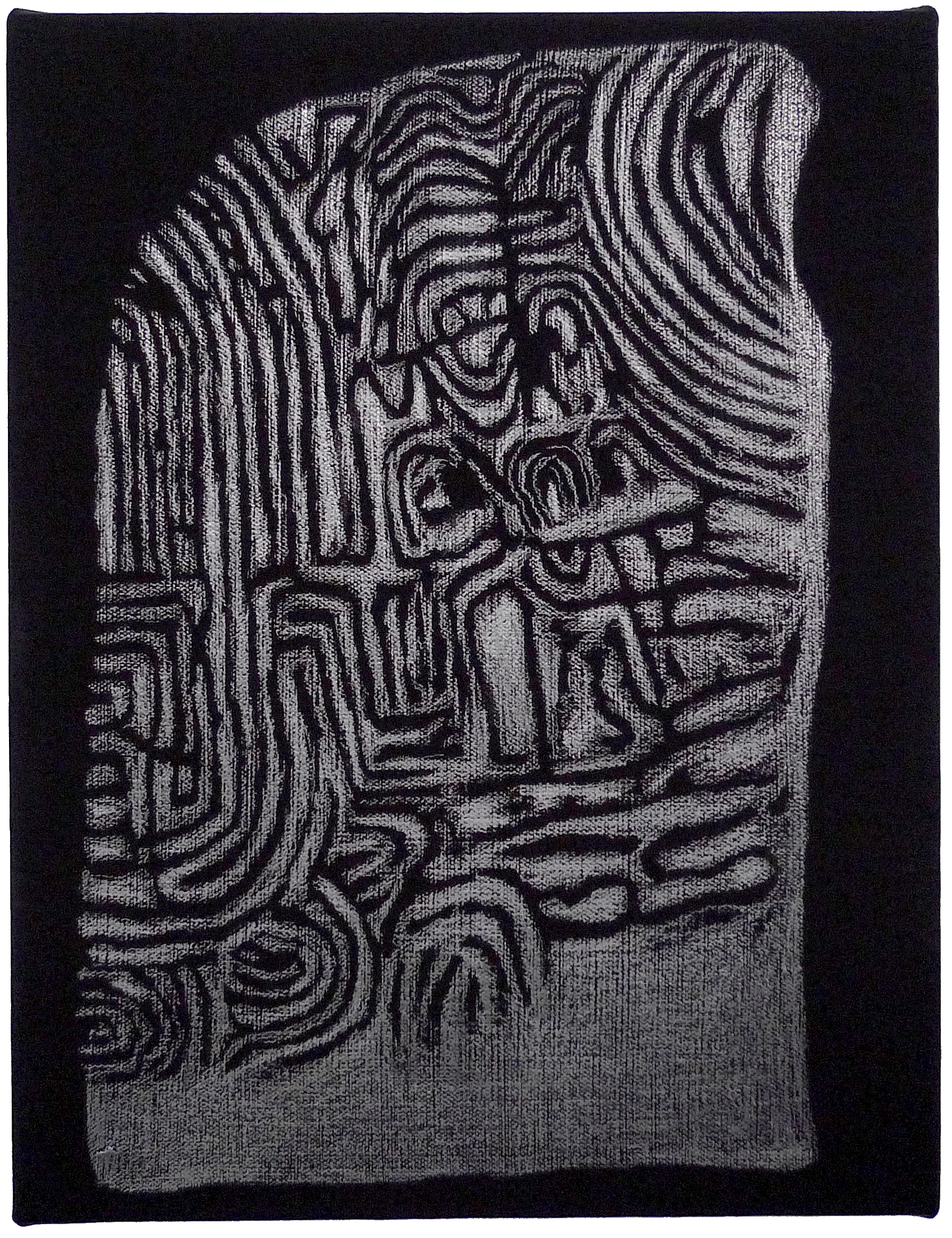
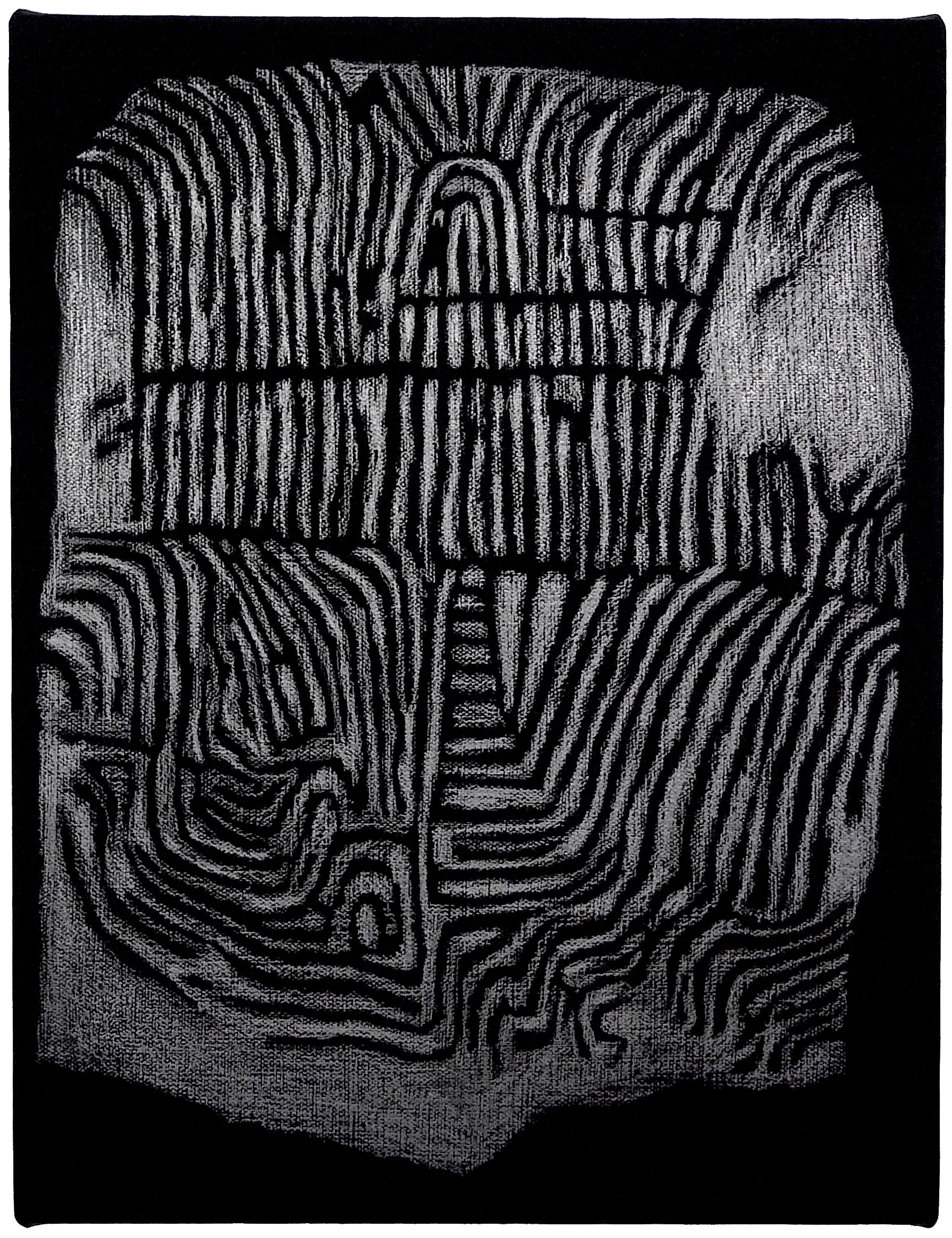
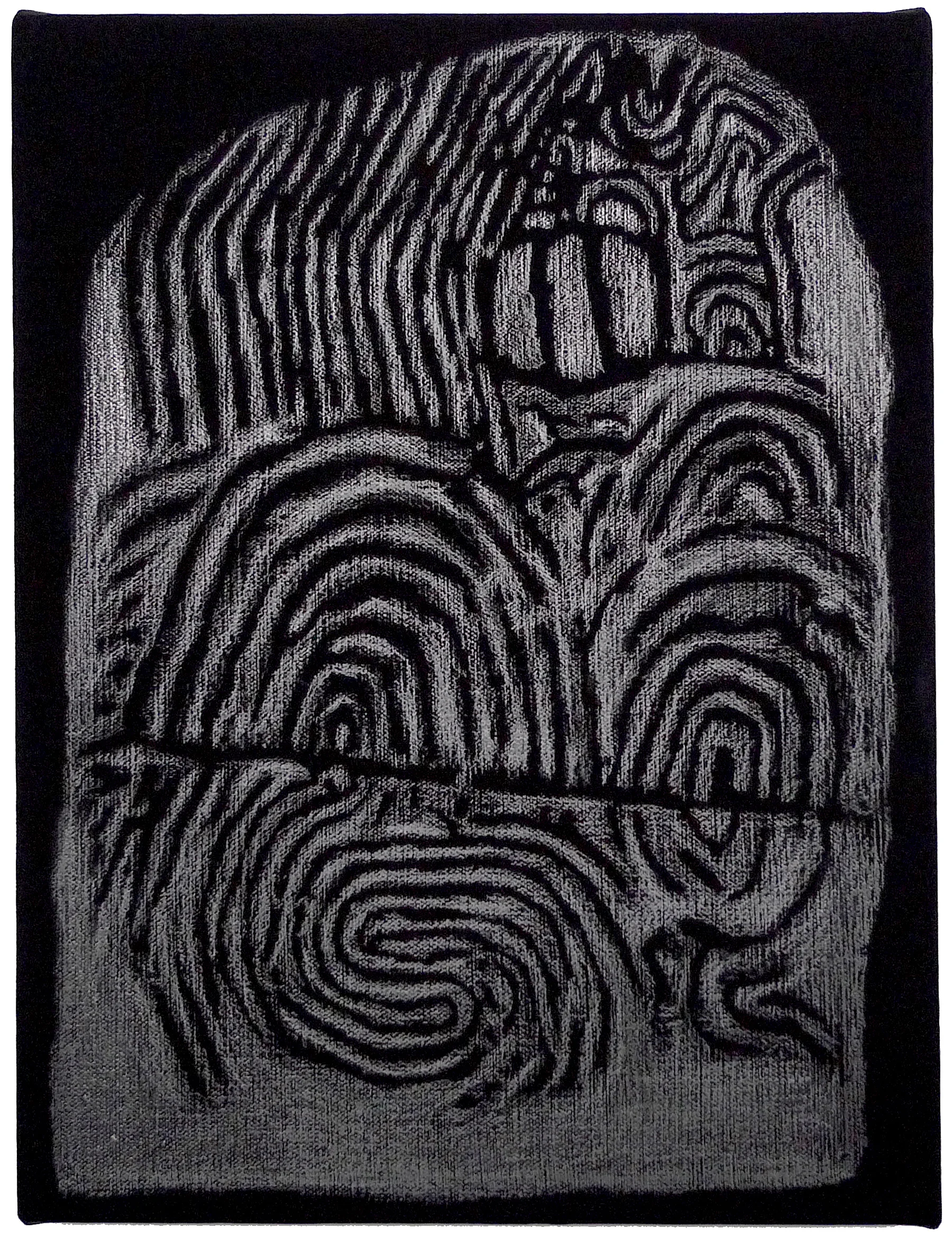
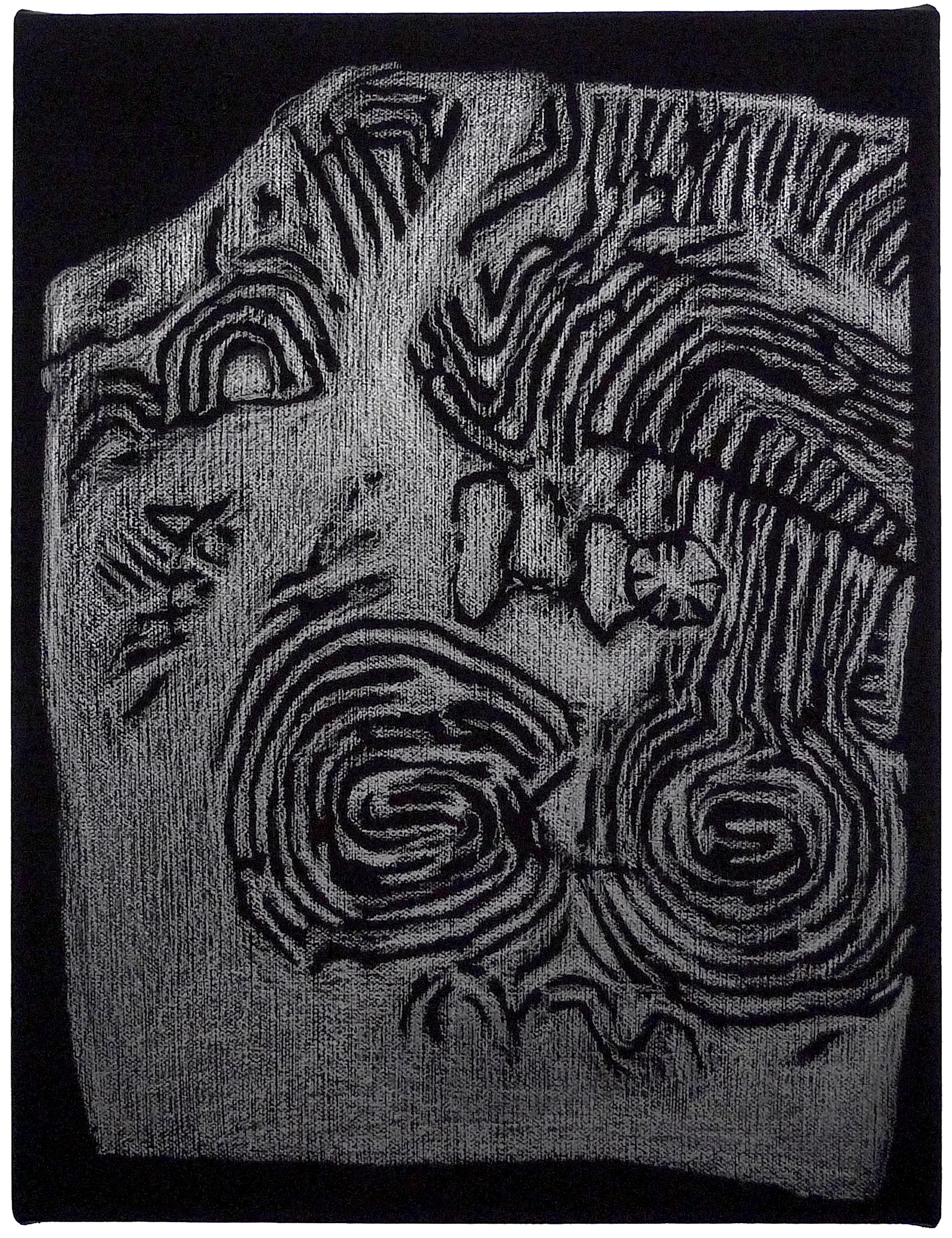

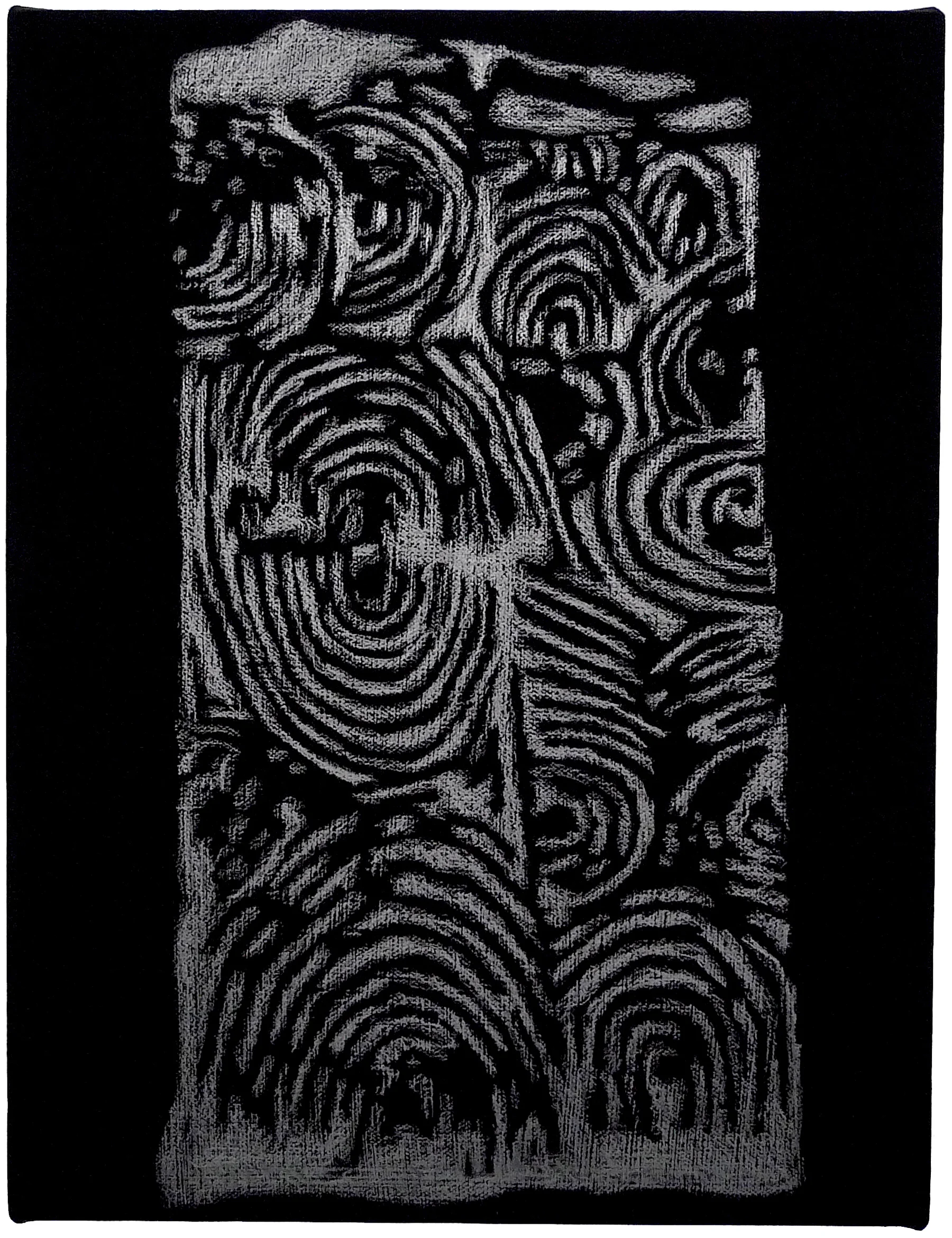
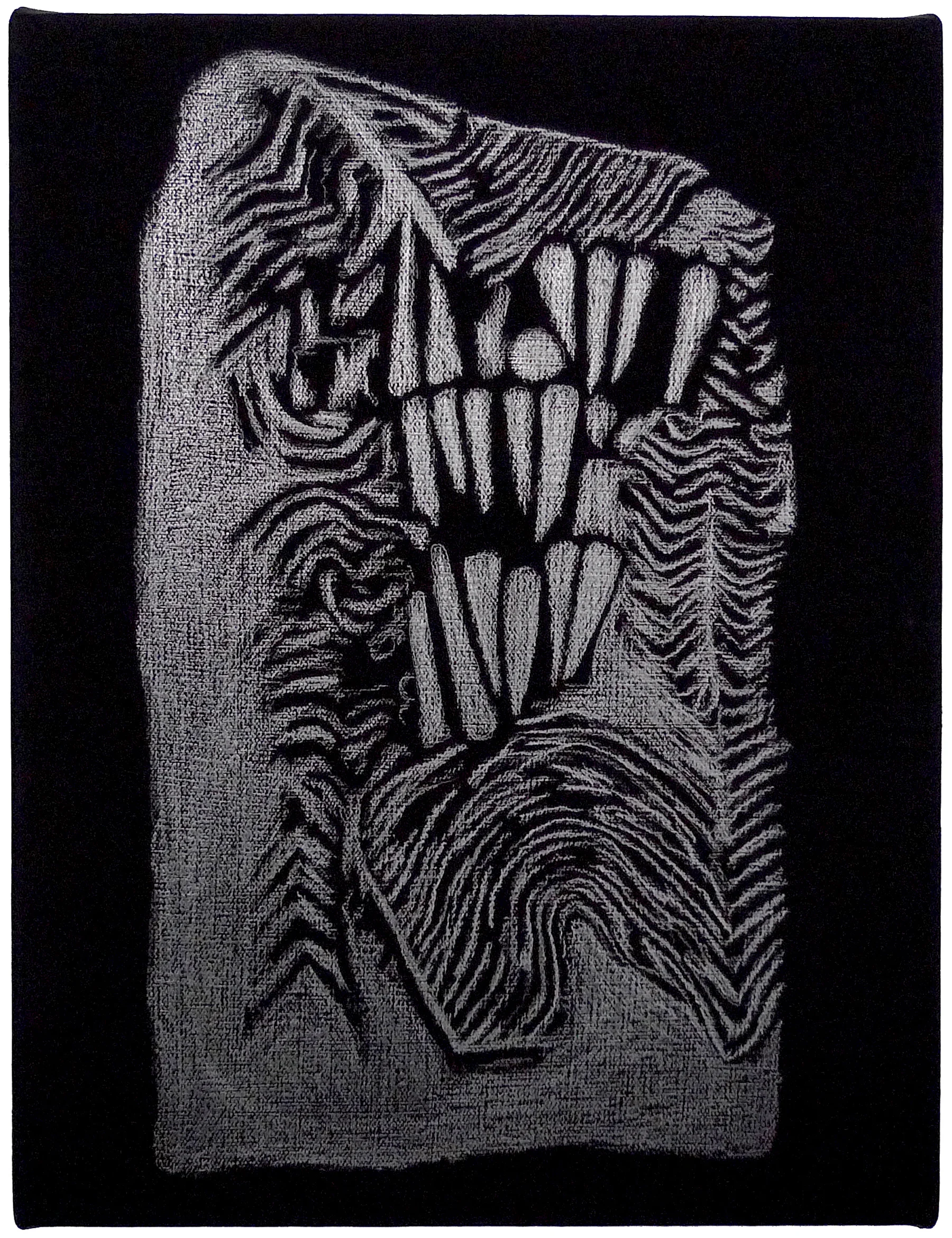
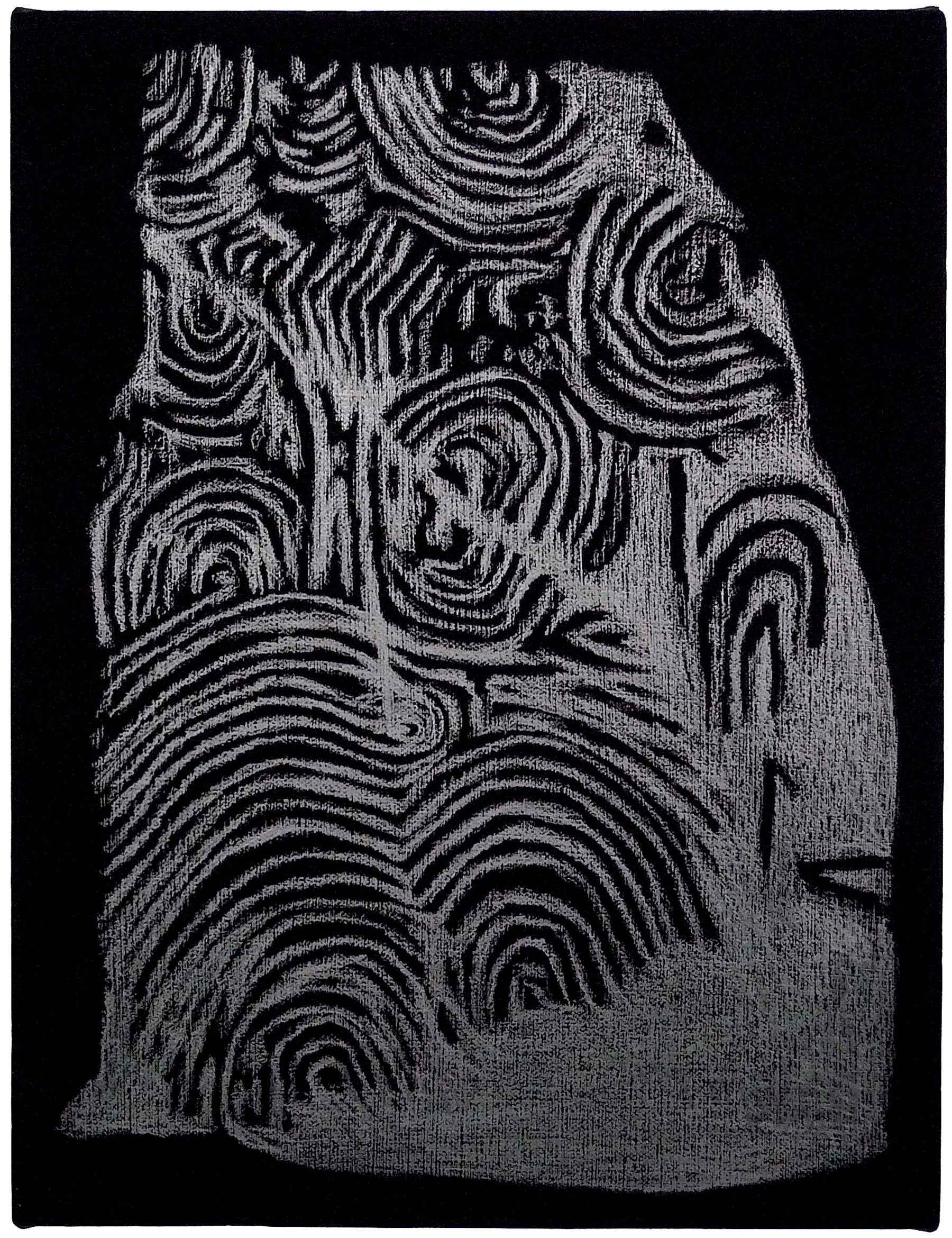
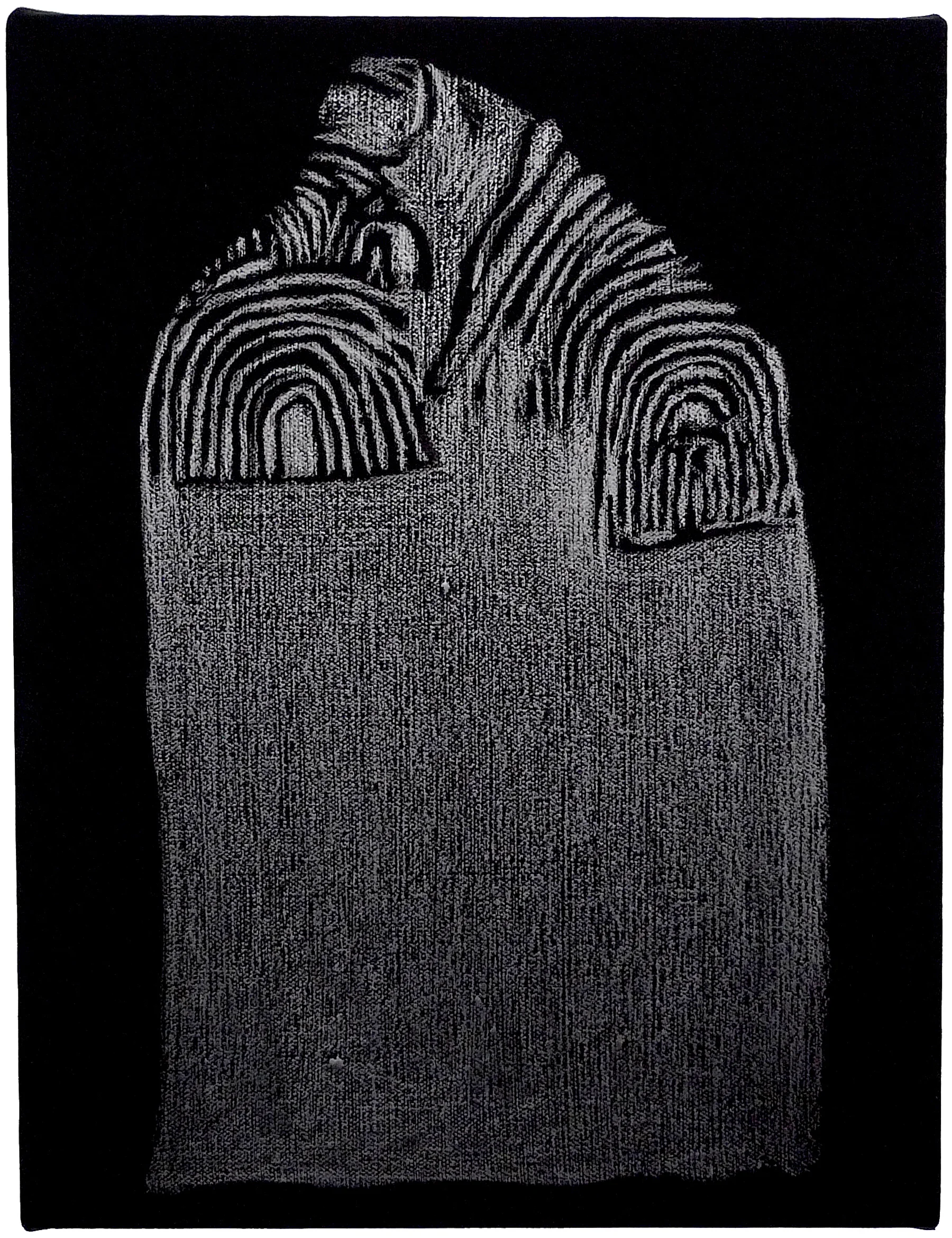

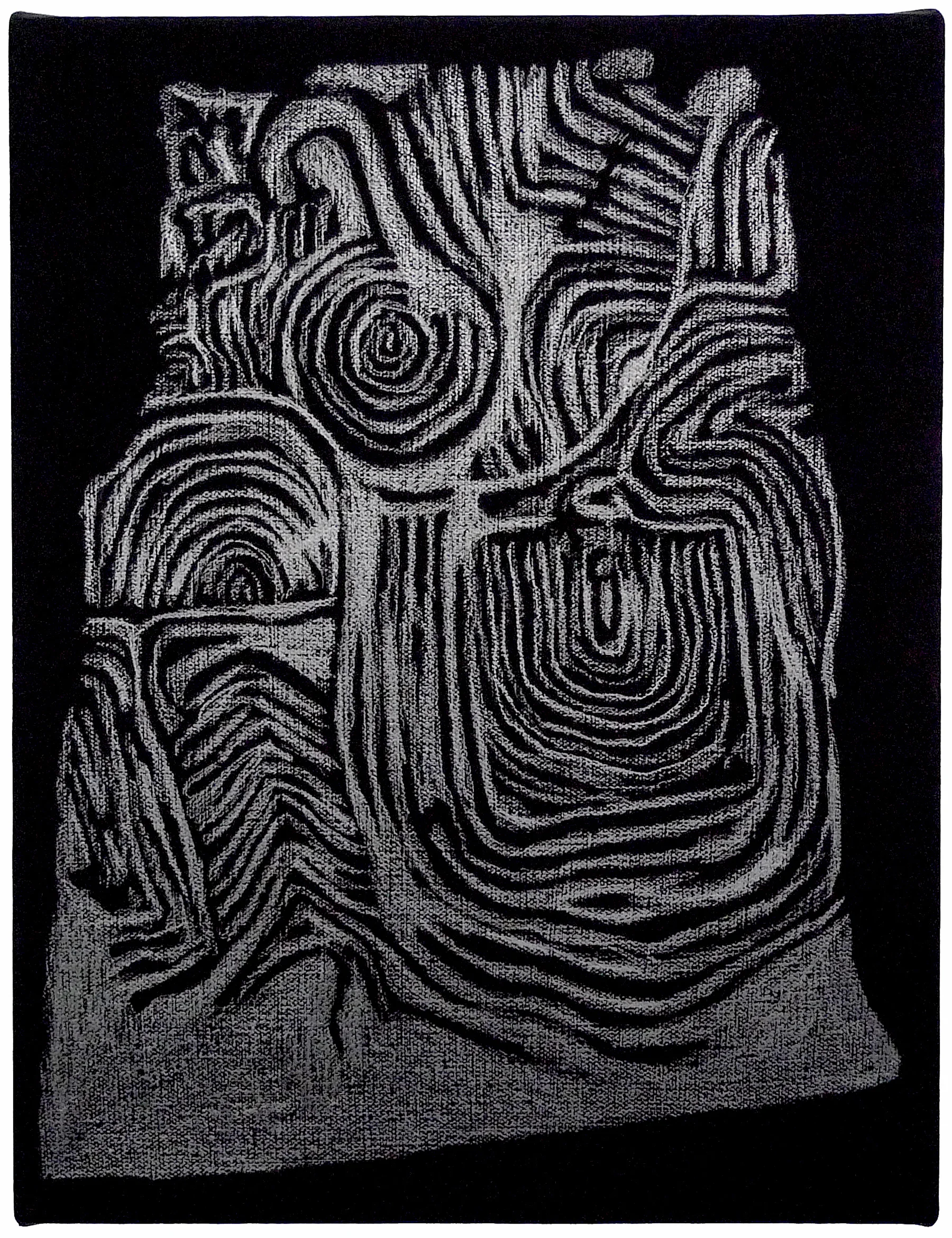




In the Gulf of Morbihan in Brittany, France rests Gavrinis, an uninhabited island that was not always such. Isolated and preserved as home to one of the most richly engraved megalithic monuments of the Neolithic era, sea levels have risen to create an island of Gavrinis. Its exterior structure is a cairn, an earthen mound covered with small stacked rocks, which protects and conceals its interior core of a dolmen or "stone table” comprised of vertical stone slabs topped with perpendicular ones. Around fifty massive stone slabs constitute the interior chamber, twenty-nine stones form the side walls, of which twenty-three are ornately carved. The granite walls vibrate with carvings that suggest the enigmatic swirls of fingerprints. The hypnotic engravings contain some recognizable motifs of axes or horns, but most of the line work appears as cryptic maps or undulating motions. However illusive their meaning may seem, the sculpting of these stones was decisive and required intense effort. Noted as an archeoastronomy site, the passage orients with the winter solstice sun, the single day of the year that sunlight may fully penetrate to illuminate the dense network of shadows and symbols. The significance of Gavrinis remains enchanting and unknown.

graphite and flashe on canvas
14” x 11”

graphite and flashe on canvas
14” x 11”

graphite and flashe on canvas
14” x 11”

graphite and flashe on canvas
14” x 11”